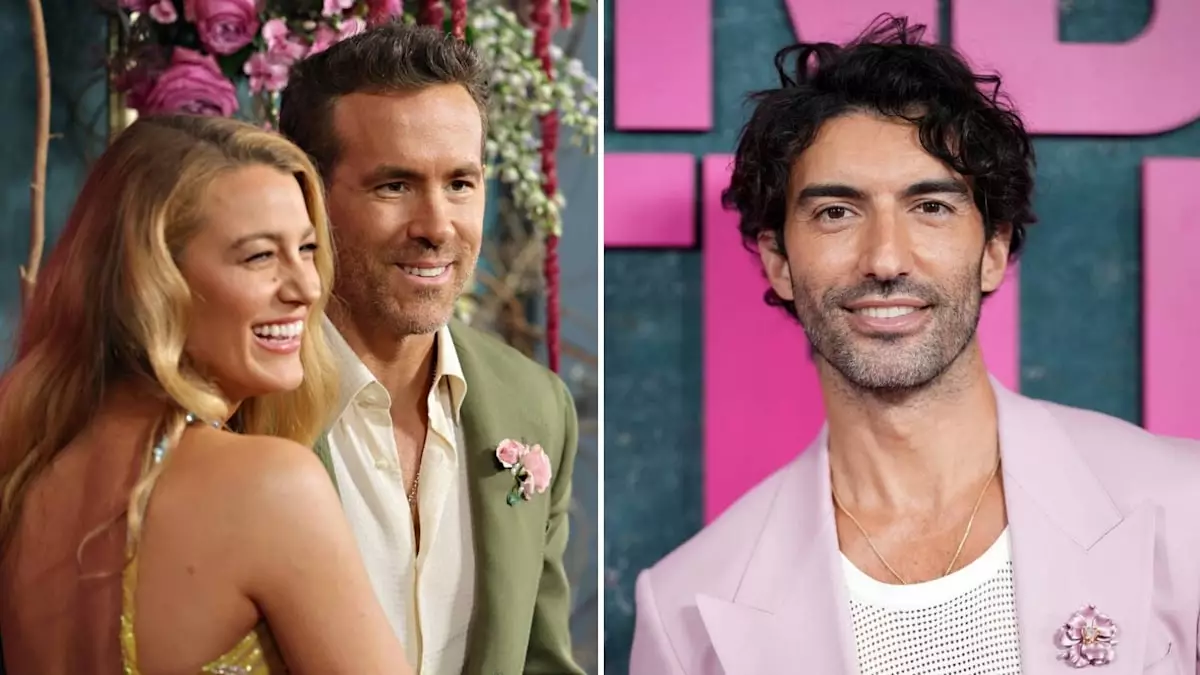The legal skirmish between actor Justin Baldoni and fellow actors Blake Lively and Ryan Reynolds has escalated into a highly publicized and intricate case, highlighting the intersection of personal grievances and professional relationships within the entertainment industry. As the narrative continues to unfold, Baldoni’s decision to release a dedicated website outlining his accusations raises questions about the motives behind such transparency and its implications on the image of those involved.
At the core of the legal conflict is Baldoni’s lawsuit against Lively, Reynolds, their public relations team, and the New York Times, alleging a conspiracy to discredit him and his film, “It Ends With Us.” The case emerged when Baldoni felt aggrieved by the negative media portrayal of the film, which he claims has been orchestrated by the defendants over a prolonged period. The creation of the “Lawsuit Info” website on February 1, which houses important legal documents including an “Amended Complaint” and an extensive “Timeline of Relevant Events,” serves as Baldoni’s attempt to reclaim his narrative and gain public sympathies.
The 168-page timeline reflects key communications between Baldoni, Lively, and Reynolds, documenting the evolution of their professional interactions. From initial discussions about the movie project to supposed disagreements surrounding its promotional strategy, the timeline offers a glimpse into the pulsing heart of a collaboration that has, unfortunately, spiraled into controversy.
By opting to release private communications and legal documents publicly, Baldoni appears to be engaging in a high-stakes form of public relations. This strategy could backfire, potentially turning public opinion against him if perceived as a desperate cry for validation amidst a chaotic situation. In a world where celebrity feuds often captivate audiences, there is a fine line between seeking justice and seeking the spotlight.
The website includes content that ostensibly aims to position Baldoni as the responsible party amidst the chaos. His supposed admissions of accountability for the film’s misfortunes are placed in stark contrast with the allegations against Lively and Reynolds. According to Baldoni’s documents, the duo is accused of navigating the film’s promotional landscape in a manner that undermined Baldoni’s position, thereby exacerbating tensions among the cast.
Among the more provocative claims are communications where Lively and Reynolds allegedly suggested that Baldoni assume responsibility for the negative attention surrounding the film. While this tactic of damage control may present as an effort to maintain a united front, it brings to light the conflicting interests at play. Lively and Reynolds, seasoned actors with established careers, may see this as a necessary course of action to shield their reputations from the fallout of a troubled film production, demonstrating a classic case of “blame-shifting” prevalent in the entertainment industry.
Baldoni’s release of the statement drafted for him and his production outfit, Wayfarer Studios, reveals a troubling duality. While the appeal for ownership of the errors suggests a mature approach, the necessity for such a statement hints at deeper problems that extend beyond marketing strategies. The intention behind declaring that “We are learning and growing from the experience” may resonate well with audiences seeking authenticity, yet it also risks highlighting perceived inadequacies within Baldoni’s leadership as a filmmaker.
As this legal saga progresses, the ramifications stretch far beyond the courtroom. With a trial date set for March 9, 2026, the forthcoming legal battle will not only affect Baldoni, Lively, and Reynolds but will also resonate across the film industry. The outcome could reshape professional relationships, influence future collaborations, and set a precedent regarding how personal disputes get handled in the public eye.
The Baldoni vs. Lively and Reynolds lawsuit exemplifies the complexities of interpersonal dynamics in Hollywood, where personal encounters often intertwine with public perceptions. As the story continues to evolve, industry watchers and fans alike will be keenly observing not only for resolutions but for deeper insights into the often tumultuous life behind the silver screen.

